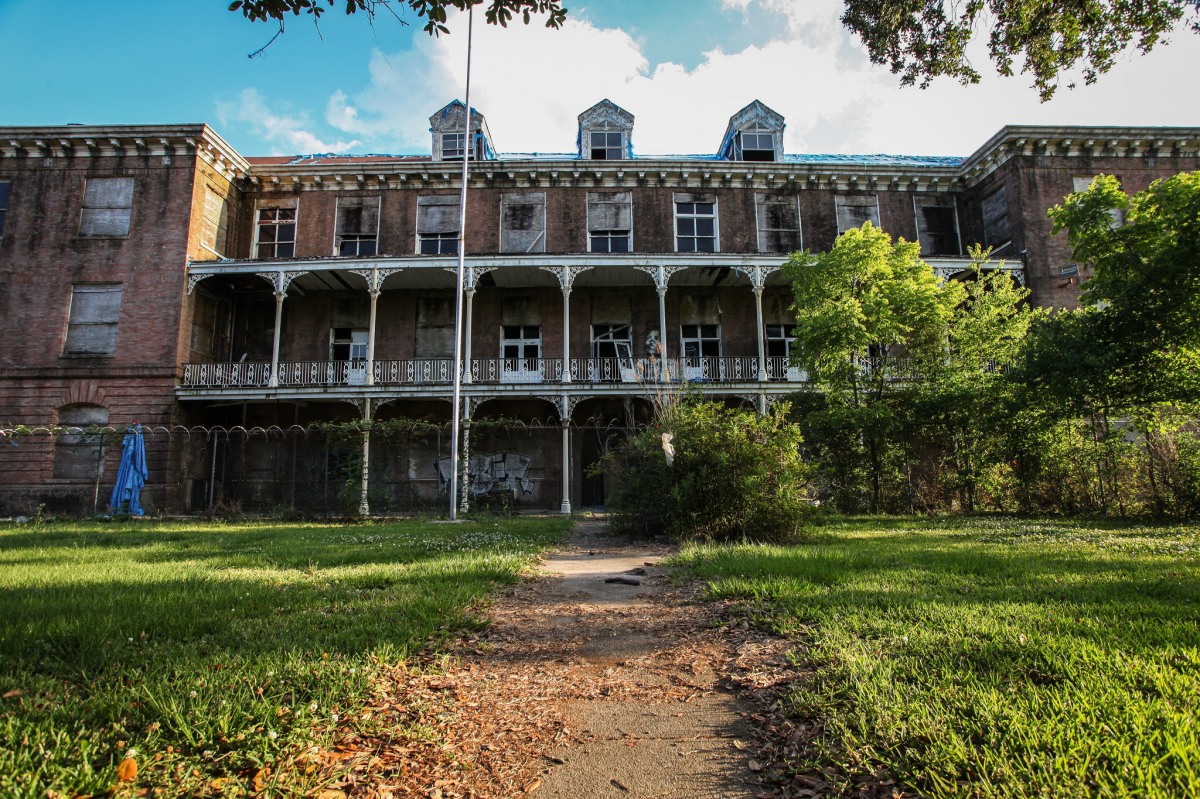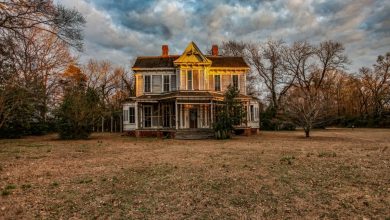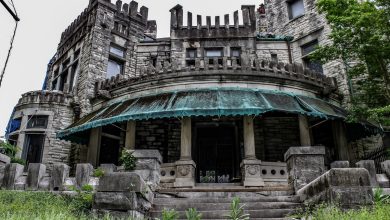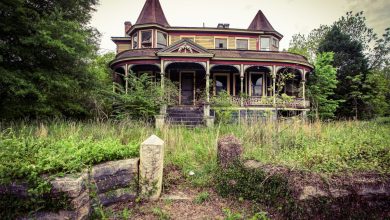Holy Cross High School – Abandoned House
Founded in 1837, the Congregation of Holy Cross took its name from a district in the city of LeMans, France – Saint Croix or Holy Cross. In 1849, the Archbishop of New Orleans invited five brothers of the Congregation of Holy Cross to New Orleans to assume responsibility for operating St. Mary’s Orphanage. The city had been devastated by a series of epidemics: cholera, yellow fever, and malaria. In 1859, the congregation purchased Reynes Farm, a riverfront plantation in the Lower 9th Ward. In 1879, as the need for the orphanage diminished, St. Isidore’s College, a boarding and day school was opened. The property became the original site on which Holy Cross School stood, and it is here that Holy Cross’ history officially began. The area has since become a Federal Historic District known as the Holy Cross District.

The General Assembly of the State of Louisiana chartered the institution on June 20, 1890, empowering it to confer bachelor’s and master’s degrees. At the suggestion of the Archbishop, St. Isidore’s College was renamed and solemnly dedicated as Holy Cross College. Holy Cross operated a boarding program until 1972 that attracted as many as 150 student residents each year from across the South and Central and South America. In 2007, Holy Cross selected a site for a new school in Gentilly and abandoned the campus in the Lower 9th Ward. Holy Cross remains the only all-boys Catholic school in the greater New Orleans area to offer a comprehensive pre-K through 12th-grade education.
The blighted campus was purchased in August 2012 by Perez LLC, a New Orleans developer with plans to revitalize the site. According to a February 2003 article, Perez planned to move its offices into the building and open a coffee or sandwich shop on the first floor. The firm also had an agreement with New Corp, a local community development financial institution, to open a business incubator in the building. Perez also vowed to preserve an existing oak tree grove on the property for use as a farmer’s market and host for art fairs so the property would continue to be accessible to the community. Several years went by with no signs of progress.
In 2016, Perez and its development partner, MACO, claimed that construction would start soon. Much to no one’s surprise, the new plans did not contain a coffee shop, a sandwich shop, a farmer’s market, or a business incubator. Initially, two new 13-story towers were proposed. Residents and preservationists were up in arms. The proposal required a zoning change and neighborhood input, so meetings were held. The neighborhood prevailed. There was so much opposition to the initial plan that the tower heights were reduced to seven stories, but there were other concerns that were ignored. The residents were told a three-phase plan to redevelop the site, bounded by the Mississippi River, Deslonde, Reynes, and Burgundy Streets was in the works. There was interest and hope. But concern still reigned.
Perez hired a marketing and advertising firm to create a campaign to change minds. A “Revive Lower 9” social media campaign was started and signs went up. Residents and groups opposing the plan were told they were against the development. The agency canvassed the area asking people to sign a petition supporting the project, but some of those signatures are questionable. Given its history, concerns continue to be expressed about the status of the building. Requests have been made, repeatedly, to tarp the roof. In response, residents have been told that the building is structurally sound, and the roof is fine. Ironically, Perez has denied the Holy Cross Neighborhood Association’s request to walk through the building, citing safety issues. In 2019, the owner of Perez LLC told the City Council that she was concerned about the deteriorating condition of the school.
The situation with the Holy Cross campus seems like deja vu to some within the community. The neighborhood had already experienced the loss of the historic Semmes School to a developer who said they were doing everything they could to save the building and that it was structurally sound, only for it to later be demolished. As a result, the HCNA has diligently fought for accountability. Since 2012, neighbors have repeatedly asked the building be secured and for lighting to be put up because vagrants were living inside the structure. In some cases, residents have asked for simple things like yard maintenance and securing the parking lot. The owners have been cited by the City for demolition by neglect. The campus was named one of the most endangered sites in New Orleans in 2018 by the Louisiana Landmarks Society.










In 2016, Peggy Fulford, a financial advisor from New Orleans, convinced a doctor in Slidell they would jointly redevelop the former campus of Holy Cross High School. She persuaded the doctor to invest $371,000 while they partnered to purchase the former Lower 9th Ward campus and convert it into an assisted living community for the elderly. However, the property was never for sale. When the doctor learned that Fulford was actually a serial con artist and had been arrested on charges involving Saints player Ricky Williams and NBA star Dennis Rodman, he demanded his money back. The doctor was able to cancel one check he wrote Fulford for $197,000 before she could cash it, but another one for $174,000 was already gone. Fulford gave the doctor a check reimbursing him for the missing amount but canceled it before it could be cashed.
After her arrest in 2018, Peggy Fulford was found guilty a year later and sentenced to 3 years in prison along with a federal prison sentence of 10 years that will run concurrently. During the FBI’s investigation, it was uncovered that Fulford had 8 aliases, ran over 85 bank accounts, and had created more than a dozen shell corporations, a few of which bore Dennis Rodman’s name. An agent for the FBI said that Fulford created such a tangled web of money laundering that the FBI stopped trying to unravel it. Peggy Fulford’s scheme was not just reliant on gaining the victim’s trust, but also on her ability to secure a power of attorney for each sports star. Her scheme was laid out in detail on the CNBC show American Greed.
In 2023, developers invested $8 million to transform the deteriorating Holy Cross administration building into 59 apartment units. The project aims to breathe life into the abandoned campus. While the restoration is well-received by neighbors, questions linger about the fate of adjoining parcels of land. A high-rise was proposed, but the city rejected that idea. The focus remains on the administration building and the community will have input on the rest of the property. Developers aim to have apartments ready for lease by summer 2024, with unparalleled views of the levee, river, and downtown.


Thank you for reading. Please share the blog with your friends. I appreciate your support. You can find me on Facebook, Instagram, and TikTok. For more amazing, abandoned places check out my photography books.
Source: https://numerologybox.com
Category: Abandoned Place






